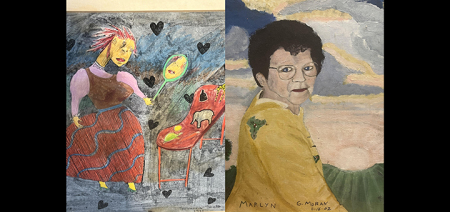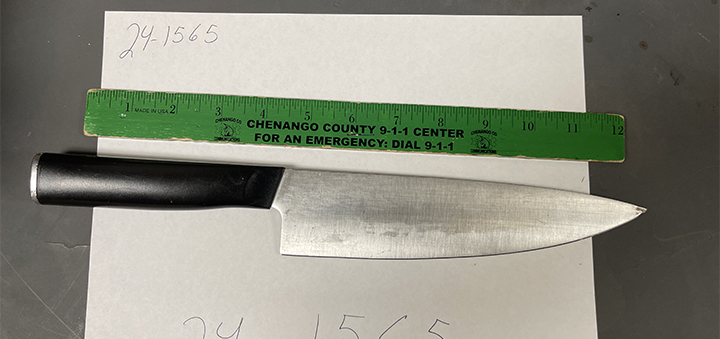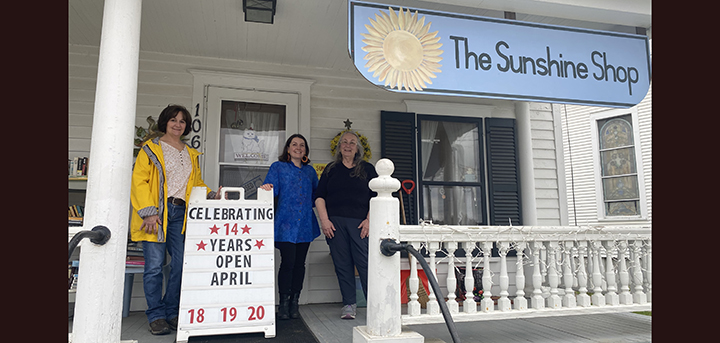The One That Got Away
Published:
March 5th, 2015
By:
Shelly Reuben
One day after I had been investigating fires for about a year, I was standing outside a private residence in Rockland County. We’d been sent there by an insurance company to determine the origin and cause of a fire that had pretty much demolished the whole building.
The “we” just referred to consisted of my late husband, Charlie King, and a fire marshal I’ll call Brian Hunter, who was helping us to dig out the scene. Brian had been in Charlie’s surveillance squad when Charlie was a Supervising Fire Marshal, and he freelanced for us from time to time.
The walls of the house were still standing, and there was a front door that still opened and closed, but the rest of the place was pretty much a charred ruin.
So, like a threesome invited to a dinner party in hell, we walked right through the doorway and began to poke around.
Charlie and I had started our company after he left the New York City Fire Department, and our days of polishing doorknobs and waiting for clients to call were long gone. We were so much in demand that our fire reports were usually two months late. We could have gotten them out faster if I had stayed at my desk, but I liked to investigate fires almost as much as Charlie, and we both knew that the best way for me to learn was to muck around in the char and soot.
By the time we got to this particular location, my husband trusted me, if not to discover the origin and cause of every fire, at least to know when I hadn’t. Charlie used to say that when he first became a fire marshal, he always knew where the fire started, but that after doing the job for a few years, he came to realize that the answer wasn’t always there.
Since our job was to plod through structures that had been destroyed by flames, it’s only logical that sometimes, along with everything else, evidence of the origin and cause of a fire would have been consumed in the fire.
But not often.
The first time that I made Charlie proud of me as a professional was at a bungalow in New Jersey. All of the investigators who had been there before us – claims representatives, fire chief, police investigator, and arson squad – were convinced that our policyholder had set the fire to collect the insurance money.
There are certain “red flags” that indicate arson, and our poor homeowner had been bedeviled by just about every one: He had removed his pet from the premises; removed his clothing from his closets; parked his vehicle off site; was unemployed; was an ex-con; and had been seen leaving his home half-an-hour before the fire was called in.
That he had good reasons for all of the above (dog at veterinarian; clothes at laundromat; car being repaired; employed off-the-books by his brother-in-law) did not interest the authorities in the least, since our insured so well fit the “profile” of an arsonist.
Fortunately for the ex-con/homeowner, however, our client had sent us to New Jersey to investigate the fire. We arrived at the scene, and circled the outside of the residence, looking for external evidence of where the fire may have broken through. And we quickly noticed a burn pattern on the driveway-side of the house, about a foot above the ground.
Charlie said, “Go inside, Shelly, and see if you can figure it out.”
So I did.
As I had been taught, I moved from the area of least burning (porch, hallway, living room, master bedroom, kitchen) to the area of most burning, which turned out to be the children’s bedroom, just past the enclosed front porch. As soon as I entered, I saw low burning on the wall behind one of the twin beds in a location that corresponded exactly with the burn pattern that we had seen in the driveway outside of the house.
After I pulled the bed away from the wall, I saw that fire had incinerated the sheetrock above the baseboard. Also in that area, I saw a burn pattern in the shape of a wide “V” that began on a wall stud above an electric outlet, where someone had driven a nail through the sheetrock. The nail had pierced an electric wire inside the wall. The insulation around the wiring deteriorated, and a short circuit occurred at the point where the nail touched the hot wires.
The short circuit caused the fire.
After I told Charlie what I had discovered, he examined the scene and announced that not only did I call the fire correctly, but that it had taken me just five minutes to do so.
Our New Jersey “arsonist,” it turned out, was just a bad carpenter and a magnet for bad luck. After we explained the fire to the powers-that-be, no charges were brought against him, and his insurance claim was paid.
That was the first fire I did (more or less) by myself. Charlie bragged about my “good call” for weeks.
Which brings us back to the fire I was describing at the beginning of this article. The one we investigated with Brian Hunter.
I opened the door and looked down at the door sill.
“Charlie,” I called out. “Brian. Both of you come here. Look at this hole. Somebody must have poured gasoline here.”
Charlie came over. He looked down, and said nothing.
Brian cast a glance in our direction, and he shook his head dismissively.
“What?” I demanded. “What? What?”
“It’s nothing,” Charlie said.
“Forget it,” Brian said.
And they wandered off to inspect other areas of the house.
I stood there gazing lovingly at my burn pattern. I had found it. I had discovered it. It was mine. I wanted it to mean something.
“Why?” I demanded again. “Why isn’t it important?”
“Sometimes, things like that happen at a fire,” Charlie said.
“You see it all the time,” Brian agreed.
I trailed after them, from room to room. Why? Why? Why? But neither was interested, either in my quest for knowledge or in my suspicious-looking burn pattern.
Eventually, with no help from me, Charlie King and Brian Hunter discovered that the fire had originated in the fins of an electric heating panel that had been installed upside down.
I never found out how they knew that the fire in the door sill, although deep and ugly, was innocent in nature. But Charlie and Brian were firemen before they became fire marshals, and had spent years with their brains, bodies, and lives pressed right up against the monster. It didn’t take me long to figure out that they had earned the right to their visceral knowledge.
And after a big investment of time, I even acquired a little of my own.
I spent over thirty years investigating fires. Twenty of them being Watson to Charlie’s Sherlock. And after Charlie died, another ten (nowhere near as much fun) being Sherlock myself.
I made a few good calls. I figured out where a lot of fires started. And occasionally, like all good fire investigators, I walked away from a fire scene shaking my head and muttering, “If I can’t figure it out, nobody can.”
All in all, it was a satisfying career.
But, damn it all, sometimes late at night, I see a nasty hole gouged by fire under a door sill in Rockland County, and in my mind – with something between a grin and grimace on my face – I am still following around my late husband and demanding, “Why isn’t it important? Why? Why? Why?”
Shelly Reuben’s books have been nominated for Edgar, Prometheus, and Falcon awards. For more about her writing, visit www.shellyreuben.com.
Copyright © Shelly Reuben, 2015
Author: Shelly Reuben - More From This Author
Comments






